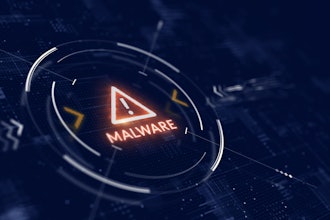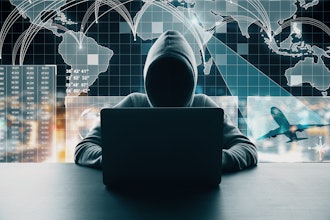
Think about it: cybercriminals are getting smarter and their tactics more sophisticated when it comes to stealing intellectual property and sensitive company information. They're finding new ways to sneak into systems and swipe crucial data, from innovative designs to company communications. This article isn’t meant to be just an alarm bell; but a practical guide that’s been carefully designed to help you bolster your company’s cybersecurity efforts and practices. We’re tapping into the know-how of ethical hackers to show manufacturers how they can beef up their defenses.
The Evolving Nature of Cyber Threats
According to research from the CERT Insider Threat Center at Carnegie Mellon University, although only 12 percent of the cases in their insider threat database are defined as theft of intellectual property (IP), these incidents are among the most damaging types of insider attacks. The average potential damages for such incidents range between $29 million and $42 million, with some trade secrets valued at up to $1 billion in research and development costs.
There are currently an average of around 2,200 cybersecurity incidents a day—as organizations grow and integrate various technologies into their operations, they inadvertently open up new avenues for information exposure. Beyond external threats, internal vulnerabilities also play a significant role. This database also revealed that 52 percent of insiders stole trade secret information, 30 percent stole sensitive internal documents, and 20 percent targeted source code Disgruntled employees or those with access to sensitive information can intentionally or unintentionally become sources of data leaks.
Furthermore, the increasing reliance on third-party vendors and suppliers in the manufacturing process introduces additional risk to the equation. These partners often have access to a company's network, creating potential backdoors for cybercriminals.
The Different Methods of Industrial Espionage
Industrial espionage has evolved into a complex and multifaceted threat. Companies face an array of sophisticated methods, which are employed by competitors and cybercriminals alike, aimed at infiltrating their systems and extracting valuable intellectual property. Understanding these diverse espionage tactics is crucial for robust defense strategies. Let's delve into the most prevalent techniques threatening corporate security.
- Unauthorized Access. This refers to instances where individuals, either from within the organization (internal) or from outside (external), gain access to networks, data, endpoints, devices, or any sort of hardware or applications without proper authorization. In today’s increasingly digitized landscape, every part of your software infrastructure has to be thoroughly scrutinized. All tools, from the ones as simple as a native PDF viewer or an email client, to more complex solutions such as cloud storage and network infrastructure management software can be exploited by attackers if they lack the proper authentication mechanisms, firmware and access controls. The information obtained through unauthorized access can be used for various purposes, including leveraging further access or damaging systems and networks.
- Phishing Attacks. Phishing is a well-known method of corporate espionage, which typically starts with an email containing a seemingly legitimate document or link within it. However, these are designed to deceive recipients into providing sensitive information or allowing unauthorized access to systems and networks. Companies can be particularly vulnerable when there are specific events, like staff augmentation using Workday or another platform, or around sensitive times of year like tax season or the holidays.
- SQL Injections. SQL injection or SQLI is a technique where attackers use SQL code to manipulate a database and gain unauthorized access to information. Through SQL injections, attackers can view or modify database contents, which can be used for espionage or other malicious activities. Attackers can use SQLI to bypass authentication measures, access and exfiltrate sensitive data, modify database information, and even, in severe cases, execute administrative operations on the database, such as shutting it down or corrupting data.
- Insider Threats. Perhaps the most insidious form of corporate espionage is the insider threat, which can occur both maliciously and accidentally, and often without any sort of detection. Such threats encompass human error, malintent by employees, or even basic negligence. Insider threats are unique in that businesses of all sizes are equally vulnerable to them—with giants like DuPont and Shell being among the victims of some of the worst cases of insider-based cyberattacks in recent memory.
Ethical Hacking to Stay Secure
Ethical hacking, also known as penetration testing or pen testing, has emerged as a critical tool in identifying and addressing vulnerabilities before they can be exploited. Many regulations like HIPAA, PCI DSS, SOX, GDPR, and the CMMC require proof of compliance, and penetration tests can play a pivotal role in keeping your IP protected.
Specifically, PCI DSS mandates a comprehensive pen testing program known as Requirement 11.3, further highlighting its significance in evaluating an organization’s security posture and verifying adherence to standards for auditors or other authorities. With pen testing, ethical hackers simulate cyber attacks under controlled conditions to uncover weaknesses in a company’s cybersecurity defenses. A comprehensive ethical hacking exercise can reveal hidden vulnerabilities, such as unpatched software, weak passwords, and inadequate firewalls. Moreover, it can test the effectiveness of existing security protocols and employee awareness of cybersecurity practices.
Manufacturers can then take proactive steps, such as implementing multi-factor authentication, updating software regularly, and training employees in cybersecurity best practices.
Safeguarding Proprietary Data
Protecting proprietary data requires a multifaceted approach, including things like using firewalls, intrusion detection systems, and regularly updating your company’s antivirus software. Encrypting sensitive data both in transit and at rest adds another layer of security, making it harder for unauthorized individuals to decipher information, even if they manage to access it. Access control is another crucial aspect to consider since not every employee in the company needs access to all company data all the time.
Implementing a policy of least privilege, where employees have only the access necessary for their job role, can significantly reduce the risk of internal data breaches. Also, regular audits of access rights and user activities can help you quickly identify and address instances of inappropriate access or any potential anomalies.
Backing up data is equally important here, so in the event of a cyberattack, your company can quickly recover its critical data without any sort of significant loss. You should ensure that these backups are stored securely, ideally in a separate location or on the cloud, with strong encryption and access controls.
In the fight against industrial cyber espionage, collaboration plays a vital role in keeping your intellectual property and sensitive data safe and secure. Manufacturers should consider participating in industry-wide cybersecurity initiatives and sharing best practices since this can provide valuable insights into emerging threats and effective defense strategies. Moreover, working with government agencies and cybersecurity firms can provide access to advanced tools and intelligence that individual companies might not possess.
Collaboration also extends to the supply chain. Manufacturers should work closely with their suppliers and vendors to ensure that they adhere to stringent cybersecurity standards. Regular audits and assessments can help ensure the entire supply chain is fortified against potential cyber threats.
Protecting intellectual property in the age of industrial cyber espionage requires a comprehensive approach to remain secure. To stay ahead in this ongoing battle, manufacturers must embrace a culture of continuous improvement and learning in cybersecurity. This process involves things like staying informed about the latest cyber threats and trends, investing in advanced security technologies, and continuously training employees. Remember, cybersecurity is not a one-time effort but a continuous process that evolves with the changing digital landscape.



















